Photos: Star Trails and Aurora Glow in the Night Sky
More than 800 photos from 54 countries were entered into this year's International Earth & Sky Photo Contest, with a starry vortex above a South African mountain taking home the top spot overall. The contest is meant to focus attention on the problem of light pollution while also revealing the beauty of the dark sky hovering above Earth's wondrous landscapes. Here's a look at this year's winning photos. [Read the full story on the night sky photo contest]
Cape Town, South Africa
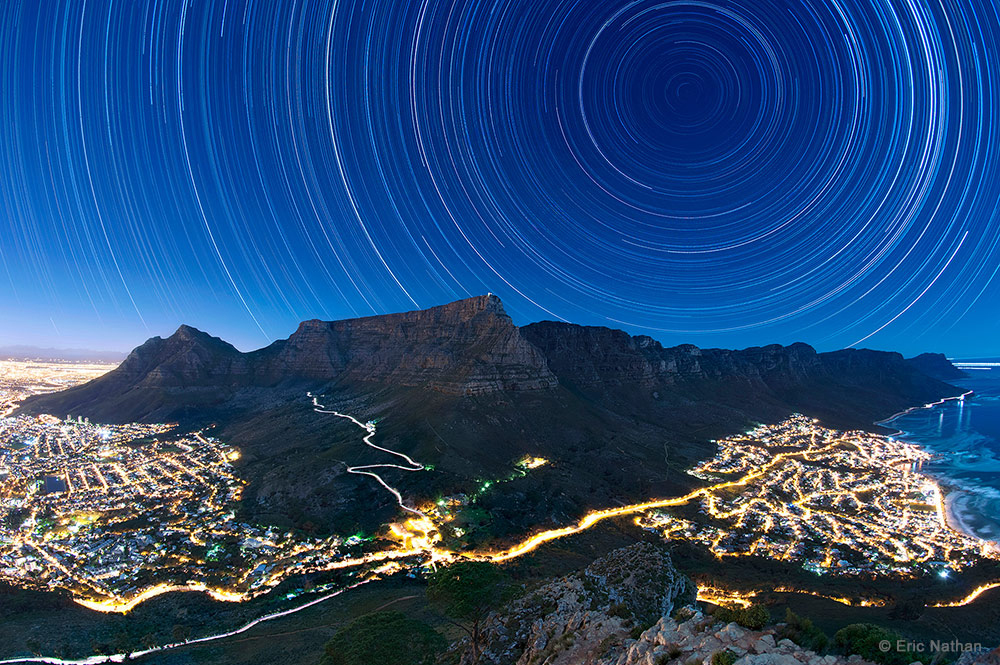
The roads of Cape Town, South Africa, sprawl like arteries beneath Table Mountain in this nightscape shot by photographer Eric Nathan. This image was created by stacking 900 30-second exposures, enabling Nathan to capture the swirling star trails caused by the rotation of the Earth. This image won the 2015 International Earth & Sky Photo Contest, also taking first prize in the contest's "Against the Lights" category. The goal of the contest is to draw attention to the night sky and highlight the need to combat light pollution.
Murmansk, Russia
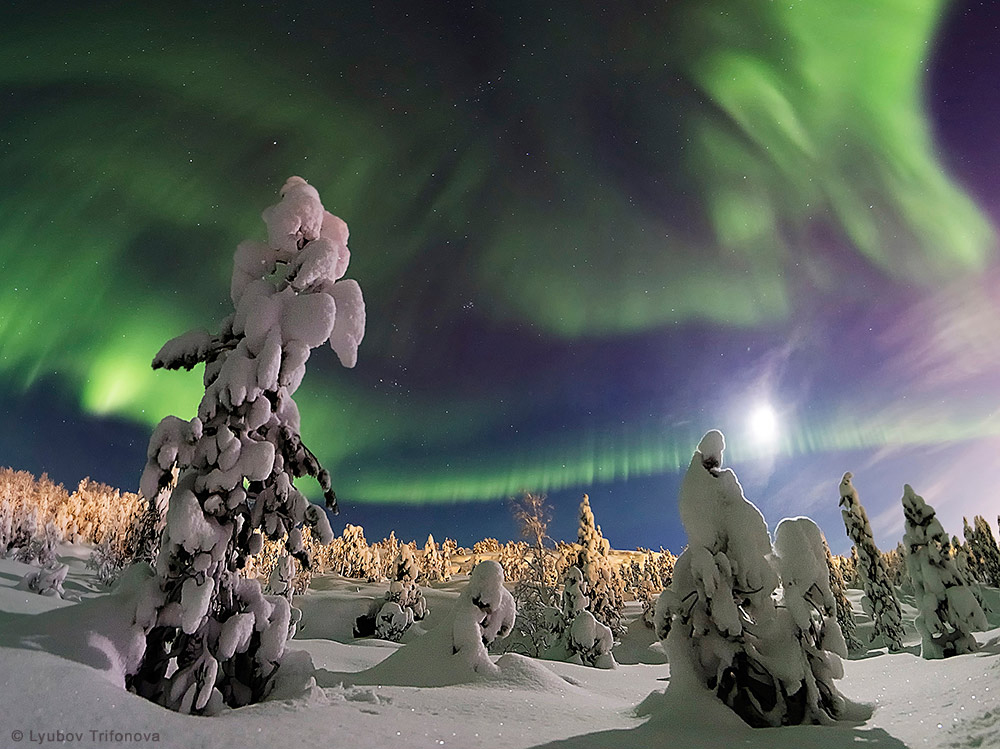
Snow-heavy and lit by moonlight, the trees of Murmansk, Russia take center stage in the "Beauty of the Night Sky" category of the International Earth & Sky Photo Contest. The moon and the aurora light up the forest in this image by Lyubov Trifonova.
"This well composed and executed image captures the pin-sharp images of the Pleiades and Hyades through swirling bands of auroral light over snow-covered trees. The snow itself sparkles in the light of the moon and Lyubov has pointed her camera so the trees appear to reach for the sky. Beautiful!” wrote judge David Malin.
Mt. Rainier, Washington State
Sign up for the Live Science daily newsletter now
Get the world’s most fascinating discoveries delivered straight to your inbox.
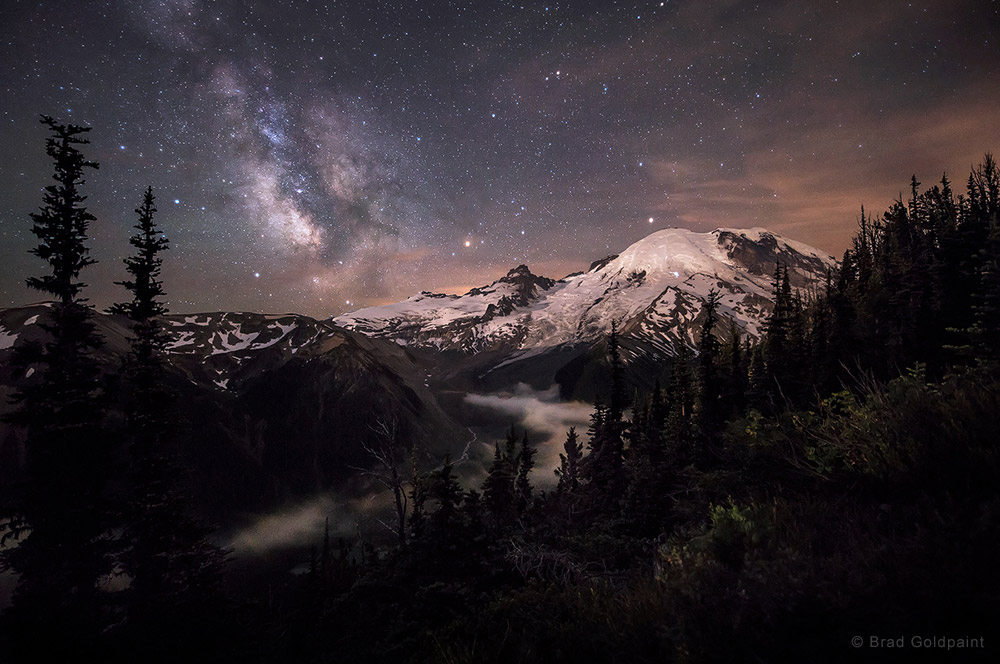
Second place in the Beauty of the Night Sky category went to American photographer Brad Goldpaint, who captured this image of Mt. Rainier in Washington state in July 2014. The Milky Way brightens the sky, and moonlight touches the snow on the mountain's face.
"This is a subtly crafted composition that invites reflection as much as it does awe," said contest judge James Richardson.
Peak Terskol Observatory
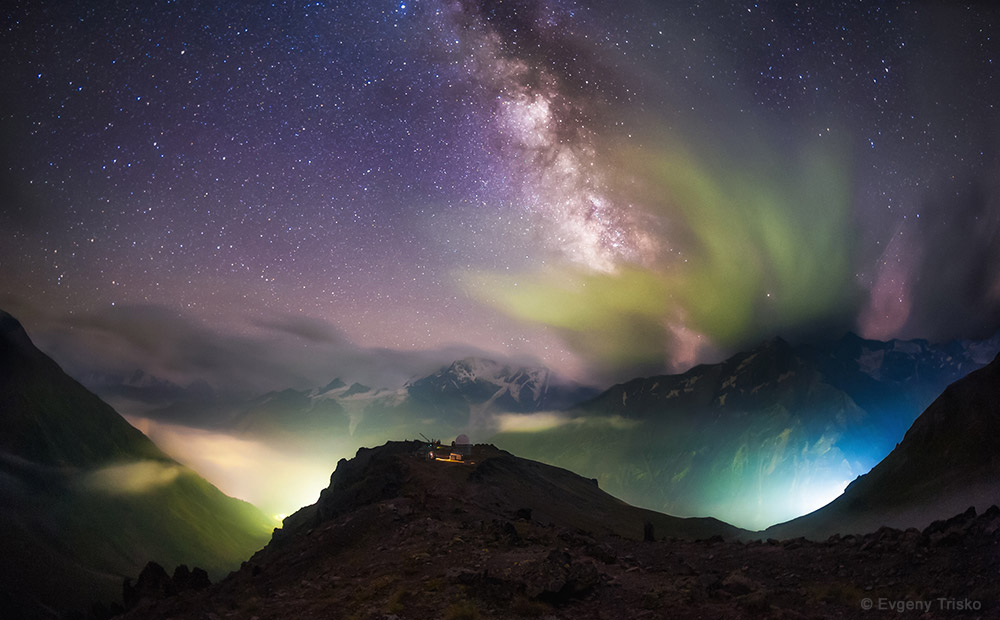
Evgeny Trisko took second place in the "Against the Lights" category for this eerie image of clouds and the Milky Way over the Peak Terskol Observatory in the northern Caucasus Mountains of Russia. The clouds creeping over the mountain are lit yellowish-green by street lights from the valley. Contest judge James Richardson called this image both "magical" and "masterful."
Crater Lake, Oregon
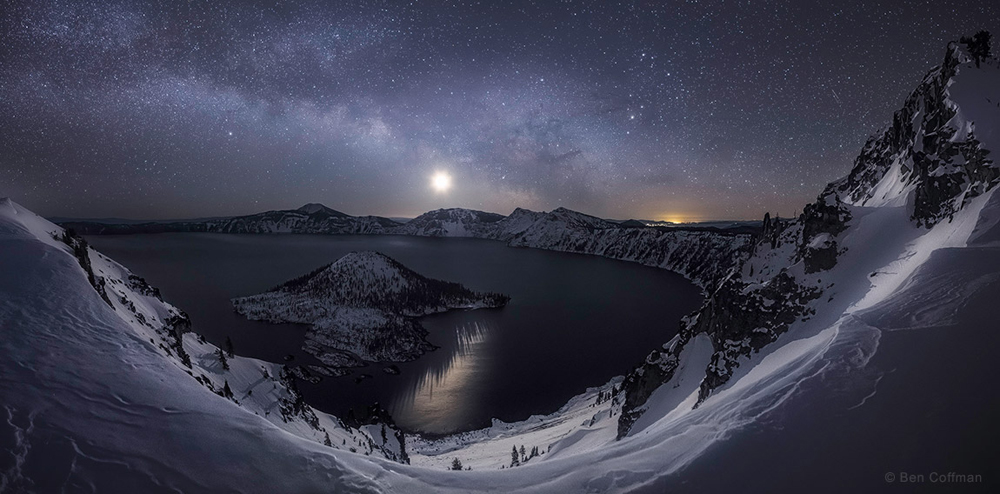
Crater Lake in Oregon looks placid and still in the third-place winner of the "Beauty of the Night Sky" category. Moonlight throws sharp shadows on the snowy slopes surrounding the lake, and the Milky Way rises in the dark sky. Photographer Ben Coffman took this image in February 2015.
"The moonlight glistening on the waters of Crater Lake set this image apart," Richardson wrote.
Chongquing, China
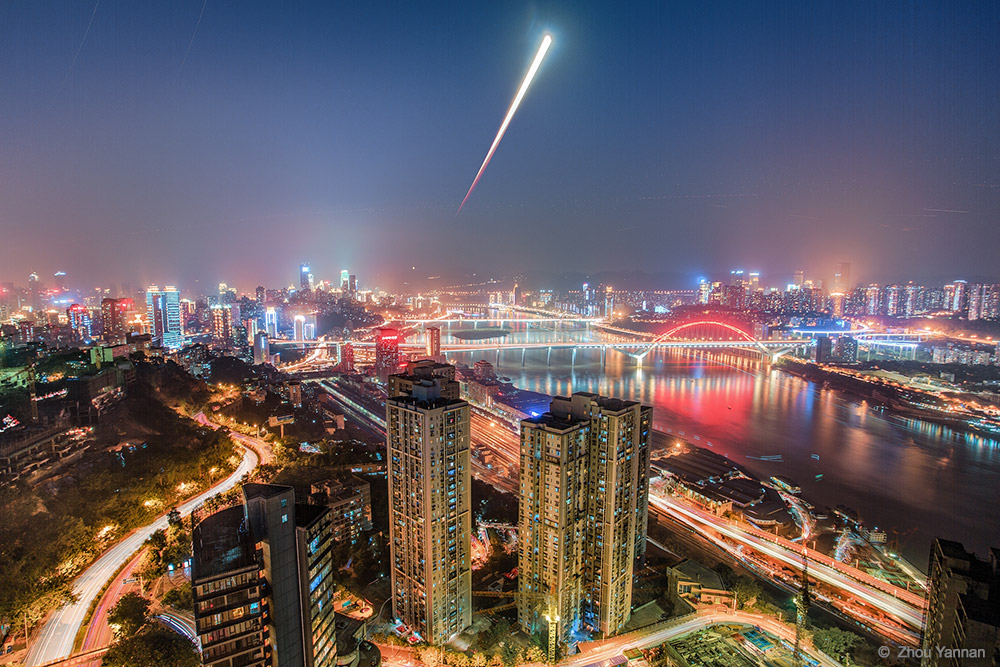
City lights didn't stop Zhou Yannan from capturing the rise of a lunar eclipse in Chongquing, China – nor did they keep this photograph from taking third place in the "Against the Lights" category. High-rises and a brightly-lit bridge over the Yangtze River dominate this image, but don't drown out the blood moon in the sky.
"Photographing elusive astronomical events through the dusty air of brightly lit city of Chongquing would appear impossible. However, Zhou Yannan has managed to capture the orange light of the Earth's shadow crossing the Moon during the eclipse as it rises through the flashing lights of countless aircraft," judge David Malin wrote of the image.
Reykjavik, Iceland
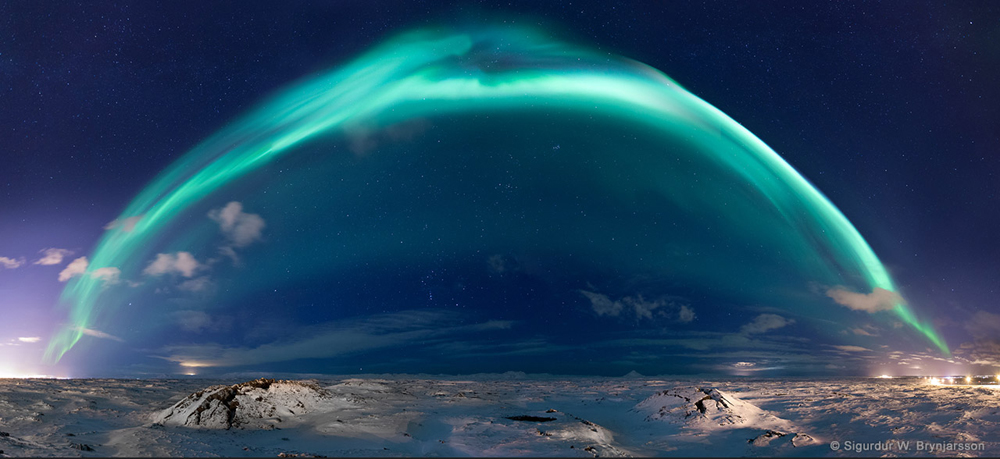
"The Dome," the fourth-place winner of the "Beauty of the Night Sky" category, is a breathtaking panorama taken from near Reykjavik, Iceland by Sigurdur William Brynjarsson. The Northern Lights seem to arch like a rainbow over the snowy landscape. Reykjavik's lights are to the right; on the far side of the image are the lights of the town of Keflavik. The Pleiades star cluster and the constellation Orion are visible beneath the aurora.
Bromo Tengger Semeru National Park, Indonesia
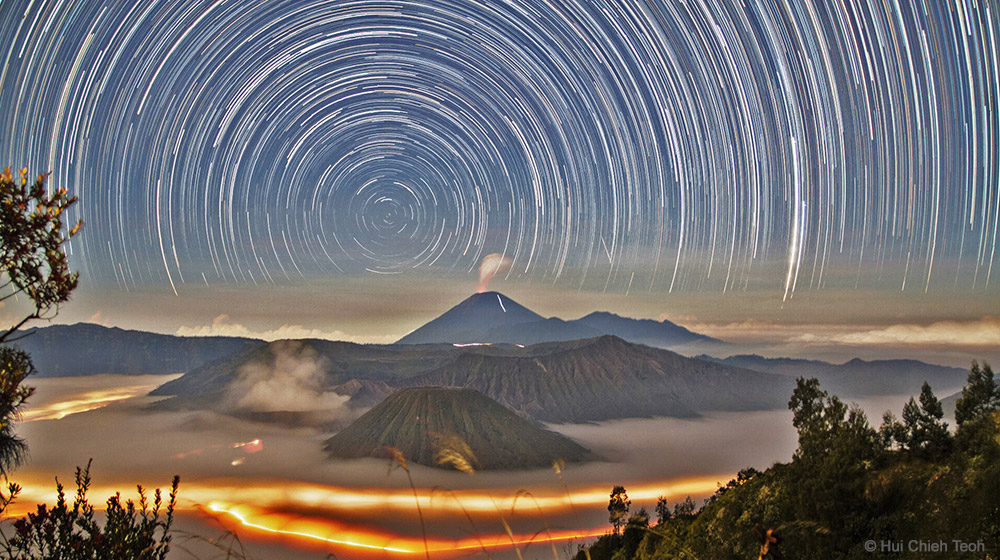
Fourth place in the "Against the Lights" category of the International Earth & Sky Photo Contest went to Hui Chieh Teoh of Malaysia for his shot of star trails over Bromo Tengger Semeru National Park in Indonesia. Mt. Bromo, an active volcano, steams in the center of this image, as human light pollution penetrates the mist below.
Bolivia's Salar de Uyuni
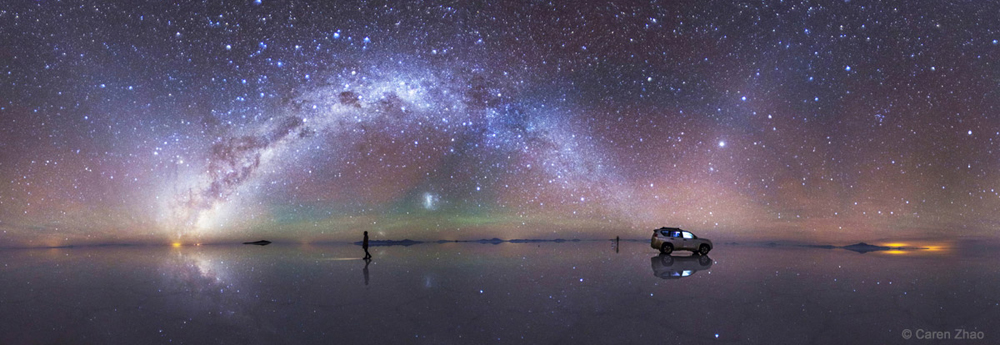
This unbelievable image was taken by Caren Zhao of China, who was traveling to Bolivia's Salar de Uyuni, the largest salt flat in the world, in February 2015 when the sky put on this show. The bright arc is the southern Milky Way, and the diffuse triangular glow is zodiacal light, caused by the sun's reflection off of dust in space.
"There was no escape from this breath-taking intoxication," Zhao wrote in the description of the photograph. The image took fifth place in the "Beauty of the Night Sky" category.
Stavropol region, Russia
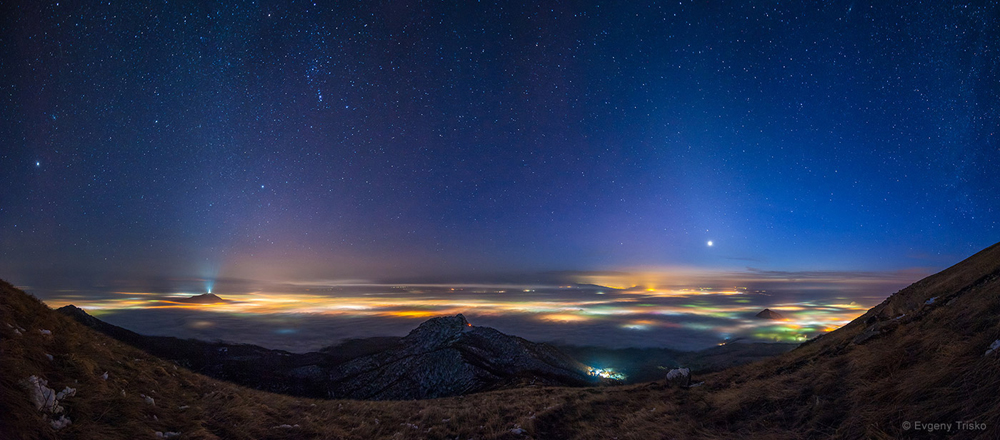
The fifth-place winner of the "Against the Lights" category was a shot of the night sky in the Stavropol region of Russia from February 2015. Photographer Evgeny Trisko captured stars over a layer of clouds, through which village lights penetrated in colors ranging from gold to green.
Follow Stephanie Pappas on Twitter and Google+. Follow us @livescience, Facebook & Google+. Original article on Live Science.

Stephanie Pappas is a contributing writer for Live Science, covering topics ranging from geoscience to archaeology to the human brain and behavior. She was previously a senior writer for Live Science but is now a freelancer based in Denver, Colorado, and regularly contributes to Scientific American and The Monitor, the monthly magazine of the American Psychological Association. Stephanie received a bachelor's degree in psychology from the University of South Carolina and a graduate certificate in science communication from the University of California, Santa Cruz.










